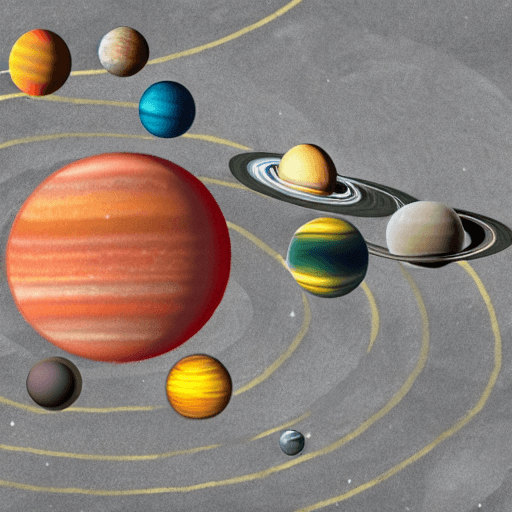An eon is a really long time.
But how long is an eon, exactly?
Scientists have different ways of measuring the length of an eon, and it can be tricky to compare different time scales.
Because of the complexity, there are various definitions of an Eon but we are going to answer the question: how long is an eon?

An eon is an immeasurably long period of time.
It is often used to describe the age of the universe, or the length of time that a particular species has been around. In geological terms, an eon is even longer than an era.
How long is an eon?
An eon is an immeasurably long period of time.
New scientific findings have pushed back the date of the Earth’s formation by several eons, and scientists believe that the universe itself is around 14 billion years old.
The history of our planet is divided into eons, each characterized by different geological and biological processes.
The first eon began with the formation of the Earth and lasted for around two billion years.
This was followed by the Hadean eon, during which the first basic forms of life appeared.
Since then, there have been three more eons: the Archean, Proterozoic, and Phanerozoic.
Each eon has seen major changes in the Earth’s climate and biology, and researchers are still uncovering new details about our planet’s distant past.
Given the vastness of an eon, it’s no wonder that it remains one of the most mysterious concepts in geology.
What is an Eon, in time?
In geological time, an eon is the longest division of time.
The Earth is believed to be around 4.6 billion years old and is thought to have formed during the Hadean eon, which lasted from 4.6 to 4 billion years ago.
The next significant division of time is the Proterozoic eon, which lasted from 2.5 to 4 billion years ago. This was followed by the Phanerozoic eon, which began 541 million years ago and continues to the present day.
Within the Phanerozoic eon, there are three major divisions of time:
- The Paleozoic Era
- The Mesozoic Era
- The Cenozoic Era
Each of these eras is further subdivided into periods and epochs.
For example, the Paleozoic era is divided into the Cambrian period, the Ordovician period, and so forth. The precise length of each eon, era, period and epoch can vary depending on which geologic timescale is used.
However, all geologic timescales agree that the Earth is very old and that its history can be divided into distinct units of time.
How scientists measure the length of an eon

Scientists use a variety of methods to measure the length of an eon.
- One method is to study the rocks that are found in different layers of the earth’s crust. By dating the rocks, scientists can determine how long ago they were formed.
- Another method is to study the fossils that are found in different layers of rock. By dating the fossils, scientists can determine how long ago the organisms they represent lived.
- Finally, scientists can study the relative position of different stars and galaxies. By measuring the amount of time it takes for light from these objects to reach us, scientists can calculate how far away they are and how long ago they formed.
By using all of these methods, scientists have been able to estimate that the universe is around 13.8 billion years old.
How long is an eon in seconds?
An eon in seconds would be in the trillions.
To be exact, an eon is defined as 1,000,000,000 years. There are 60 seconds in a minute and 60 minutes in an hour.
This means that there are 3,600 seconds in an hour. There are 24 hours in a day and 365.25 days in a year. This means that there are 86,400 seconds in a day and 31,536,000 seconds in a year.
An eon would then be in the trillions of seconds. It would take almost 32 million years to count to one trillion! So an eon is a very long time indeed. Even in seconds.
How long will an eon last

It’s difficult to say how long an eon will last because it’s such a vast amount of time. The word “eon” comes from the Greek word aion, which means “age” or “lifetime.”
An eon is often used to describe geological periods of time, such as the Mesozoic Era, which lasted for approximately 180 million years.
In astronomy, an eon is used to describe the life cycle of a star, from its formation to its eventual death.
For example, our sun has an estimated lifespan of 10 billion years, which means it still has about 7 billion years left in its eon.
So while an eon is dauntingly long, it’s also a comforting reminder of the immense age of our universe and the vast amount of time that exists beyond our own relatively brief lifetimes.
How long was the Precambrian eon?
The Precambrian eon was the first geologic eon in Earth’s history, lasting from approximately 4.6 billion years ago to 541 million years ago.
The Precambrian is subdivided into three distinct eras: the Hadean, Archean, and Proterozoic. During this time, the planet was largely uninhabitable due to a lack of atmospheric oxygen and extreme conditions.
However, this eon was crucial for the development of life on Earth, as it saw the formation of the first oceans, continents, and atmospheric gases.
The Precambrian eon was characterized by slow geological processes and extreme conditions, laying the foundation for the emergence of complex life forms in the following eons.
Nevertheless, geologists use eons to help them understand the Earth’s long and complex history.
Article Sources
Jacks of Science sources the most authoritative, trustworthy, and highly recognized institutions for our article research. Learn more about our Editorial Teams process and diligence in verifying the accuracy of every article we publish.
